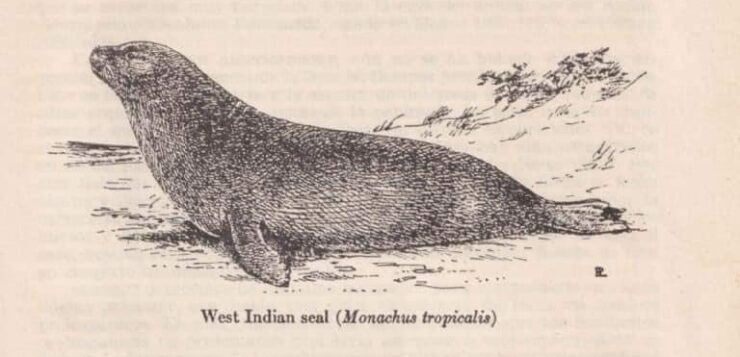The pre-Hispanic Mayans called tsulá (water dog) the seal that lived in the Yucatan Peninsula, specifically in probe Islands of Campeche, and that occasionally reached the coasts of the peninsula.

When talking about seals, it is almost inevitable to think of these marine animals resting on the ice, but the Caribbean monk seal (Monachus tropicalis) defied those images until the 1950s when the last sightings of these mammals in the warm waters and beaches were recorded. of white Caribbean sand. This species is considered extinct today.
In Mexican lands, the Caribbean monk seal – in Mayan called “tsulá” – inhabited the north of Veracruz, the Alacranes Reef in Yucatán and the Triángulos Reef in Campeche, where in 1948 some specimens were still reported. By 1952, the last colony was on the Serranilla Bank, approximately halfway between Jamaica and Nicaragua, according to Dale W. Rice’s report presented at a working meeting of seal specialists from the International Union for Conservation. of Nature (IUCN).

WHAT WAS THIS MARINE ANIMAL LIKE?
There is little information about the Caribbean monk seal. Physically it had a certain resemblance to the Hawaiian Monk Seal, which by the way is in danger of extinction.
Apparently the adults measured between 2 and 2.4 m in length, with gray-brown on the back, with yellow and white tones on the belly. The IUCN report also indicates that the pups were born approximately at the beginning of December and had light black woolly fur; however, there is no data on mating or breastfeeding periods.
THE CARIBBEAN MONK SEAL THROUGH THE YEARS
In the 1980s, a group of researchers from UNAM and the University of California made a trip in search of Caribbean monk seals on Mexican islands and reefs without having any luck.
In the report of that expedition, the researchers make a historical account of the existence of the Caribbean monk seal. The first records of the existence of this marine mammal date back to Christopher Columbus’ second voyage to the New World. It is said that upon landing in what is now Haiti, the Spanish killed eight “sea lions” that would serve as food for them.
Among the passages they describe, they highlight how in the 17th century, this species was hunted to produce oil for lamps and trips were made to different islands and reefs such as the Alacranes Reef to find it.
Intense hunting and human activity are the key to the extinction of this species. For many years it was exploited and as “modernity” advanced, so did human settlements, reaching the habitat of the monk seals, forcing them to retreat. Currently this species is considered extinct.
Reference OCEANA. Protecting the world’s oceans





